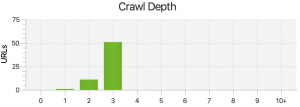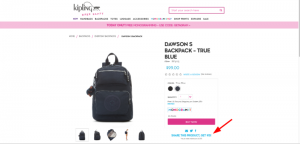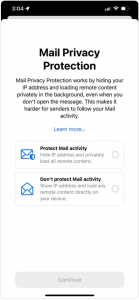I’ve been working in B2B marketing long enough to remember when Webinars first burst onto the scene as a lead generation device. At first, the concept of “online seminars” was so novel that the topic of the event barely mattered. However, very quickly, Webinars became so popular that B2B audiences tired of the medium and became more selective about where to invest their time. Even today, it takes a certain creative discipline and a compelling topic to make Webinar invitations stand out from the pack.
 Today, we seem to be approaching a similar tipping point for survey campaigns. Surveys have long been a popular lead generation tactic, primarily because they create their own content, content that in turn can be used for inbound marketing, lead nurturing, PR, social media, etc. However, the explosive demand for that content, coupled with the emergence of easy-to-use online tools like Survey Monkey and Survey Gizmo, has increased the number of surveys in market to where it’s more and more difficult for advertisers to break through the clutter.
Today, we seem to be approaching a similar tipping point for survey campaigns. Surveys have long been a popular lead generation tactic, primarily because they create their own content, content that in turn can be used for inbound marketing, lead nurturing, PR, social media, etc. However, the explosive demand for that content, coupled with the emergence of easy-to-use online tools like Survey Monkey and Survey Gizmo, has increased the number of surveys in market to where it’s more and more difficult for advertisers to break through the clutter.
What are the keys to a successful survey campaign? First, let’s explore why else survey campaigns have become so popular:
• Survey data can provide valuable insight into important market trends or customer needs
• Surveys can serve to identify qualified leads based on a prospect’s answers to certain questions, answers which can in turn result in automated alerts to sales
• Survey results can be repackaged and repurposed in multiple ways: survey reports, infographics, podcasts, Webcasts, blog posts, tweets, etc. (in marketing parlance, surveys have “legs”)
• Surveys serve to promote a company’s thought leadership and credibility in a particular category, especially if repeated over time (e.g. “Annual Trends Report”)
How to make your survey campaign stand out? Here are 5 tips for a successful survey campaign:
Choose a topic that interests your audience.
Many survey topics are selected because they relate best to the marketer’s solution or category. But choosing a topic simply because it aligns with your interest in creating content on that same subject can be misguided. Prospects respond best to surveys on topics for which they, the audience, have an immediate interest. In particular, the most successful surveys are often those focused on topics for which prospects are motivated to benchmark themselves against their peers.
Sell the value of taking the survey.
Sorry, but simply saying “We need your opinion” isn’t going to compel a busy executive to sacrifice even 5-10 minutes of his/her time. Prospects take surveys for lots of reasons, some of them business-related (“I’m curious how my peers are tackling these same issues”), others more personal (“I can use this data to show my boss how our department is outpacing other companies.”) Successful surveys appeal to both business and personal motivators, and the campaigns highlight that value. Examples would include the ability to get instant “grades”, a free survey report, or the chance to win a $ 50 gift card.
Create a seamless user experience.
Surveys are by definition longer than your typical B2B registration form, so it’s critical to present a user experience that is seamless and intuitive and minimizes abandonment rates. Presenting a cohesive, professional design helps (a tip: use of generic, non-branded online forms devalues both your survey and the prospect’s time). In addition, by selecting best-of-breed technologies (marketing automation, survey tools), you’ll not only create an optimal user experience and maximize conversions, but also facilitate data collection, campaign tracking and attribution, and automated follow-up.
Leverage your investment by repurposing content.
Here’s another parallel with Webinars – just as more people typically end up watching recorded Webinars than attended the live event, so too the value of a survey campaign is largely dependent on how you market, merchandize, and repurpose survey data. In all likelihood, many more people will download a survey report than will actually complete the survey in the first place. The best way to leverage your survey investment, and to extend the life of your campaign, therefore, is by creating multiple assets based on that survey data. For example:
– a downloadable report summarizing the data collected along with expert analysis
– a Webinar or podcast in which the results are presented along with the same analysis
– an infographic highlighting key findings (with a call to action to download the report)
– a blog post summarizing the findings (with the same call to action)
And so on.
Be controversial.
When you publish the results of your survey, it’s easy to fall into the trap of then marketing those results in dry, academic language, e.g. “Marketers Reveal their Plans for Lead Generation in 2016.” But those aren’t the kind of headlines that generate press, social shares, downloads, and leads.
When our agency, Spear Marketing Group, conducted a survey last year on the degree to which B2B marketers were fully utilizing marketing automation, we published a report titled “The State of Marketing Automation Maturity.” However, when we promoted that report, we did so with the headline: “Marketing Automation Users Score a C in Maturity”. The result was hundreds of downloads, more than a thousand social shares, and articles in more than a dozen online publications.
Digital & Social Articles on Business 2 Community(89)
Report Post




